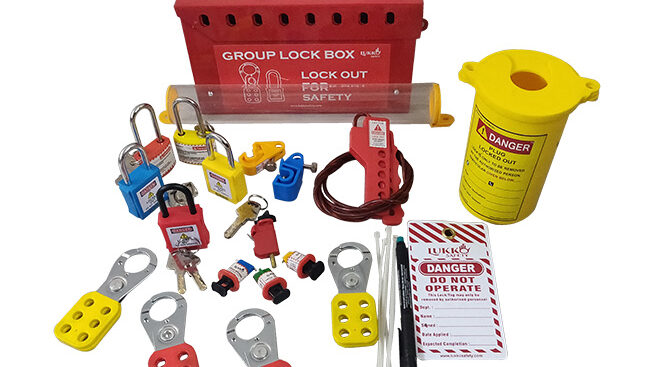When it comes to protecting employees from hazardous energy, two common methods are lockout tagout (LOTO) and machine guarding. While both methods aim to prevent injuries in the workplace, they differ in their approach to controlling hazardous energy. In this blog post, we will discuss the differences between lockout tagout and machine guarding and help you determine which method is best for your workplace.
What is Lockout Tagout?
Lockout tagout (LOTO) is a procedure used to control hazardous energy during maintenance or repair work on machinery or equipment. It involves the use of specialized devices and equipment to isolate energy sources and prevent them from being activated while work is being performed. The lockout tagout procedure ensures that the equipment or machinery is inoperable while work is being performed, reducing the risk of injury or death.
What is Machine Guarding?
Machine guarding is a physical barrier or device that is used to protect employees from hazardous energy sources. Machine guards are typically made of metal or plastic and are designed to prevent employees from coming into contact with moving parts, such as blades or gears. Machine guarding can also protect employees from other hazards, such as sparks, hot surfaces, or flying debris.
Lockout Tagout vs. Machine Guarding
Both lockout tagout and machine guarding are effective methods for protecting employees from hazardous energy. However, there are some key differences between the two methods that employers should be aware of.
Lockout tagout is typically used during maintenance or repair work on machinery or equipment. It is designed to ensure that the equipment or machinery is inoperable while work is being performed. Machine guarding, on the other hand, is a physical barrier that is always in place, regardless of whether work is being performed or not.
Lockout tagout requires employees to take an active role in controlling hazardous energy by using specialized devices and equipment to isolate energy sources. Machine guarding, on the other hand, is a passive control method that does not require employees to take any action.
Which Method is Best for Your Workplace?
Determining which method is best for your workplace depends on several factors, including the type of machinery or equipment used, the nature of the work being performed, and the potential hazards present.
In general, machine guarding is best for protecting employees from hazards that are always present, such as moving parts or hot surfaces. Lockout tagout is best for controlling hazardous energy during maintenance or repair work on machinery or equipment.
Employers should conduct a hazard assessment to identify the potential hazards present in the workplace and determine which control methods are most appropriate. Employers should also ensure that employees receive training on both lockout tagout and machine guarding procedures to ensure their safety in the workplace.
Conclusion
Both lockout tagout and machine guarding are effective methods for protecting employees from hazardous energy. While they differ in their approach to controlling hazardous energy, they are both essential components of a comprehensive safety program. Employers should conduct a hazard assessment to determine which method is best for their workplace and ensure that employees receive training on both lockout tagout and machine guarding procedures to promote a safe working environment.
For more details contact us – lukkosafety

